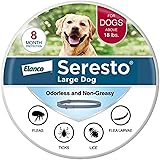Training a service animal is a rewarding yet challenging task that requires dedication, patience, and the right tools. Proper training ensures that your service animal can perform tasks reliably and assist you effectively in your daily life. In this article, we’ll provide valuable tips for training your service animal and highlight essential tools and accessories to make the process smoother and more successful.
1. Start with Basic Obedience Training
Before diving into specific service tasks, establish a foundation with basic obedience training:
- Commands: Teach basic commands such as sit, stay, come, and heel. These commands are the building blocks for more complex tasks.
- Consistency: Be consistent with your commands and rewards. Use the same words and gestures for each command to avoid confusion.
2. Use Positive Reinforcement
Positive reinforcement is a highly effective training method for service animals:
- Rewards: Use treats, praise, and toys to reward your service animal for performing tasks correctly. This encourages them to repeat the behavior.
- Timing: Reward your service animal immediately after they complete a task to reinforce the connection between the behavior and the reward.
3. Invest in Quality Training Tools
The right tools can make training more efficient and effective:
- Clicker: A clicker is a small device that makes a clicking sound when pressed. It’s used to mark the exact moment your service animal performs the desired behavior, followed by a reward.
- Leash and Harness: A sturdy leash and a comfortable, well-fitted harness are essential for guiding and controlling your service animal during training sessions.
- Training Treats: Use small, soft treats that your service animal loves. These should be easy to eat quickly to keep the training momentum going.
4. Focus on Task-Specific Training
Once basic obedience is established, move on to task-specific training:
- Identify Tasks: Clearly define the tasks your service animal needs to perform. Examples include retrieving items, alerting to sounds, or providing stability while walking.
- Break Down Tasks: Break each task into smaller, manageable steps. Train your service animal to master each step before moving on to the next.
5. Create a Training Schedule
Consistency and repetition are key to successful training:
- Daily Sessions: Schedule regular training sessions, ideally multiple times a day, for short durations. This keeps your service animal engaged without overwhelming them.
- Variety: Vary the training environments to ensure your service animal can perform tasks in different settings and situations.
6. Utilize Training Accessories
Certain accessories can enhance the training process and provide additional support:
- Training Vest: A training vest can help identify your service animal in public and provide pockets for carrying treats and other essentials.
- Toys and Puzzles: Interactive toys and puzzles can keep your service animal mentally stimulated and provide a fun way to reinforce training.
7. Seek Professional Assistance
If you encounter challenges or want to ensure thorough training, consider professional help:
- Professional Trainers: Enlist the help of a professional service animal trainer who has experience with your specific needs.
- Training Programs: Enroll in specialized training programs that offer structured training and support.
Conclusion
Training a service animal is a highly rewarding experience. By focusing on basic obedience, using positive reinforcement, investing in quality training tools and seeking professional assistance when needed, you can ensure your service animal is well-prepared to assist you. Explore our online store for a wide range of training tools and accessories designed to support you and your service animal.






















